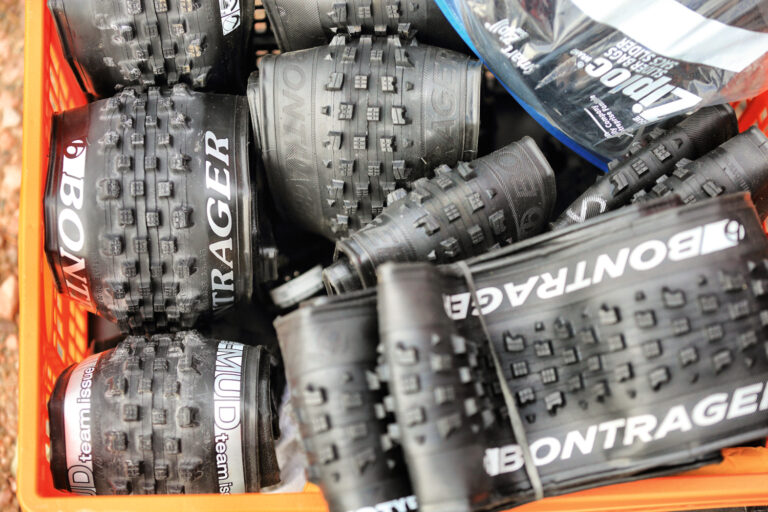
Mountain bike grips – the review
Mountain bike grips allow for a degree of damping, are crucial to control, and on a wet muddy day they are the difference between holding a camber or not. Available in varying compounds, widths, thicknesses, pretty designs, methods of fixing or purely as a marketing tool, the mtb grip can affect arm and hand fatigue and comfort. Crucially you need them to fit…
From Dirt Issue 138 – August 2013
Words by Steve Jones. Photos by Steve Jones.
THICKNESSIn as much as a grip will definitely affect fatigue on your hands it cannot be judged as the sole reason for arm pump, for this largely comes down bike chassis design, frame size and suspension design as well. Certain thicknesses will suit certain shape hands offering optimum comfort. We had some Chinese track grips which varied massively in thickness for different type riding and hand size. This kind of detail is seldom offered in mountain bike grips except for Specialized who spec each of their frame sizes with different thickness grips, and it was only until quite recently that kids bike manufacturer Isla tackled the oversize which most companies had missed.
You also have to consider the damping element involved with a grip. How much of that thickness is actual rubber compared to the inner hard plastic sleeve? More rubber equals more damping. What type of material? Is it foam that will compress and mould to the shape of your hand. The reality of grip thickness is that it will affect your ride comfort and also the sensitivity you feel into the fork/tyre/ground.
WIDTHThe objective of a grip is to get your hand to sit on the rubber part of it, for some people (particularly those with bigger hands) this simple aim is not achievable. Ranging from 125mm to 150mm the biggest factor in your decision on grip size is going to be the size of your hands, for running grips too small results in you hanging your hands out the end and often over a metal lock–ring if you choose the old fashioned way. Make sure to have the right size bar first however, as 150mm is a long old grip, and you’d probably end up wasting bar width by having to run your hands (unless they’re massive) too far inside so you can reach the brake lever. BMX grips have historically been quite wide to help the range of positions riders get into. To summarise, the width of a grip has to take into account the damped contact area and that which is made up of less than comfortable lock–ring system. Many motocross and BMX grips have no clamp, they are simply glued and wired. It depends how often you lay it down and have to work a 2mm allen key into a rusty dirt filled slot.
DIRT MOUNTAIN BIKE | BIKE REVIEWS
FIXING
As mentioned, motocross riders have been gluing and wiring their grips for decades. The method of clamping a plastic sleeve either end with an outer rubber surface (mostly known as the Lock–On) is a relatively recent idea that has increasingly moved to just single clamp lately. The clamping method is convenient when swapping brakes and bars but when those 2.5mm allen heads get full of crap it’s a nightmare.
With a good grip, there’s no need for the second clamp, and it means you can use the entire width of the grip for your hands instead of wasting a precious 10mm on the end. If you do feel the need to run your hands on the ends of your bars having the padding on the end of your grips rather than metal makes even more sense. I’ve found pressure on the hypothenar (a group of muscles on your palm) eminence has a big effect on hand fatigue, feeling more comfortable with the single clamp than double. It’s certainly no coincidence that all the best gloves are more heavily padded in this area, as that’s where the pressure goes from the bars
INNER SLEEVESleeved or semi-sleeved? The last decade has seen an improvement on the lock–on grip in terms of the plastic on which the outer rubber slides over. Some companies have yet to perfect the bonding of rubber to plastic resulting in a short lived grip, yet even more have yet to grasp the fact that by cutting out the insert will give the rider more comfort and control. Full sleeves are great for a consistent feel across the grip and are present in grips like the classic ODI Ruffian, but it means that there’s not a lot of give in the grip. The ‘half sleeve’ grips (Superstar or Charge, for example) have a bit of give, kind of mid–cushioning, others only have patches cut out. Otherwise consider the non–clamp slide on grips from Renthal, DMR, Lizard skins and Esi for example.
COMPOUNDWe choose tyres on compound, grips shouldn’t be any different. You can think of a grip’s compound cushioning properties like suspension – a thin grip has 2mm of travel, a thick one 6mm, but even then, one 6mm grip may be a softer compound than another of the same thickness. It’s important that a grip will absorb enough that it won’t make your hands feel like you’ve been using a jack hammer after every run, but not too cushioned to remove that need to feel for grip on the front tyre. Overall many grip manufacturers have failed to test in varying weather conditions. Some may be brilliant in the dry but useless once wet.
WAFFLE, PATTERN AND GRIPThe tried and tested waffle design (either half or full) seems to have lost favour amongst some companies for no apparent reason. In reality (the dirty wet reality) is that there is no better design. It’s curious why so many companies miss the trick, probably too busy copying each other. DMR and Specialized are two companies that have retained the pattern. Some say Californian designed grips fail to consider wet conditions but this is far from the truth, for most of the best wet weather designs are from the west coast. Some grips without waffle can work reasonably well in the wet regardless, Syncros for example – because of the tread pattern, but it’s still not as good as it could be. Like choosing tyres by compounds, maybe we should run different grips in the wet and the dry? Let’s check out some mountain bike grips >>
Click through to keep reading…
See also
The 10 Best Mountain Bike Carbon Bars
Six of the Best Mudguards for Winter Mountain Biking




